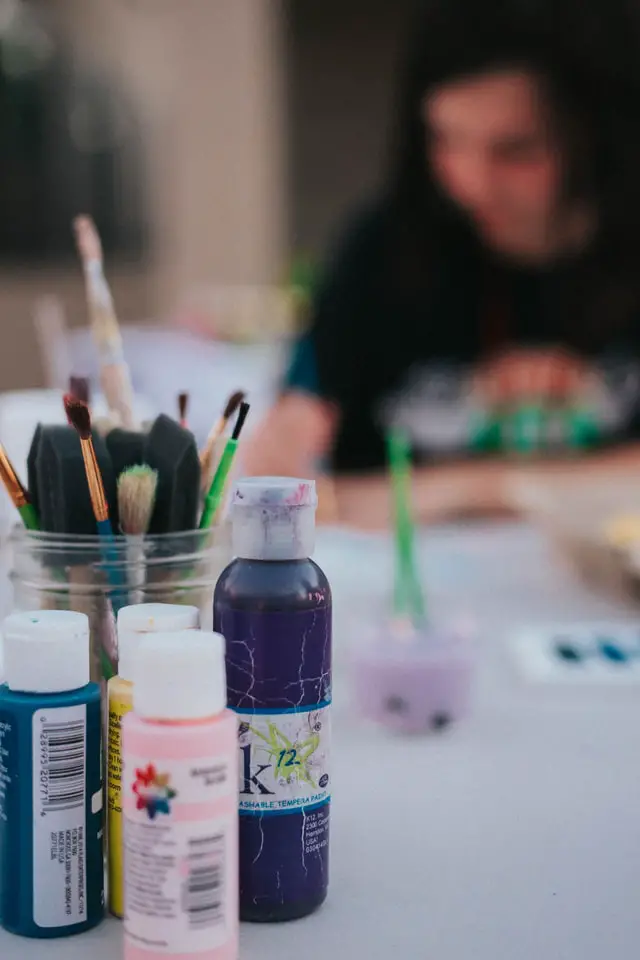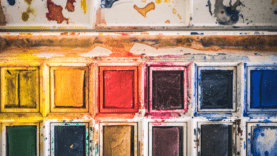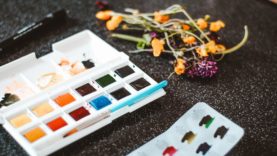
Painting on Glass – A beginner guide
Painting on Glass for Beginners
Glass has always been associated with art since the Roman times. It is a marvel that plays with a spectrum of lights and adds a classic and distinctive feel to the ambiance of any home. Today, more and more people have engaged themselves into working on painted glass projects as part of decorative painting. In a few simple steps, anyone can transform plain-looking glass into an expensive-looking piece of art.
Special Acrylic Paint Works Great on Glass Surfaces

You can start painting glass with acrylic paint. Using such paint is really very straightforward since it dries quickly, it is easy to clean-up, and is hard and durable when dry. If you use acrylic paint to decorate your glass pieces, you can surely have your very own collection of personal glassware in about an hour or two.
New Acrylic Paint Speeds Up the Drying Process
The nature of the surface to be painted is slick and not as porous as wood. However, you won’t have a problem with acrylic paint as it easily sticks to the glass surface. It is also better when painted on décor that is not meant to be washed as continued washing and handling may affect the paint. It is best exposed in the air and made for display on your shelves or kitchen tables where everyone can see it. However, a newer ‘enamel’ acrylic paint is now available which will withstand multiple washings. It may be air-dried or baked in your home oven. This paint, though very improved, is still not to be used on surfaces on which you eat or serve food and it will still not be suitable for washing machines.
Mix Colors to Get The Right Shade
If you want a thinner consistency or a paler color, you can add water to dilute the paint or mix with white or other colors to get the shade you want.
Try Painting With Sponges and Foam Stamps
Since acrylics are water-based, acrylic paints are great for sponge-painting. For one example, you can cut sponges into small squares and create checkerboard designs on the side of your glass tumbler. Sponges and foam stamps are available in nearly any shape you can think of. You can also use a brush and create fine strokes that should resemble vines or lines or anything that’s visually aesthetic for you. Once you’re done painting, let it sit for about 24 hours first before actually using it as it might chip off when touched. But when it’s dried, it’s hard and can’t be scraped off easily.
Stencils are Great for Painting
If you are not very artistic, you can always use stencils. What’s great about stencils is that you have guides in brushing paint on the glass surface, making painting a whole lot faster. You’ll also get a really good idea of how your painting will turn out because compared to fabric paints which are transparent, acrylic paint is fairly strong and opaque so the colors will not blend in with the medium on which it is painted. Be sure the stencil is very-well secured to the item you are painting. (Adhesive-backed ones are great.) When removing, the stencil, do so very carefully so as not to smear the paint.
You Can Decorate to Your Heart’s Delight
Famous glasswares which bear paint are plates, cups, tumblers, mugs, and other glass items found in the household. However, bear in mind that painted items should not be painted on areas that touch the mouth or food.

You can also work on glass candle holders, glass showcase, wine glasses, mirrors, figurines, aquariums, or any glass surface that you would like to include in your home décor. Don’t be intimidated by the vast array of projects that you can work on. The secret here is spotting the right item and knowing full well that anything, regardless of its current state, can become artful pieces that can put anyone in awe.




















